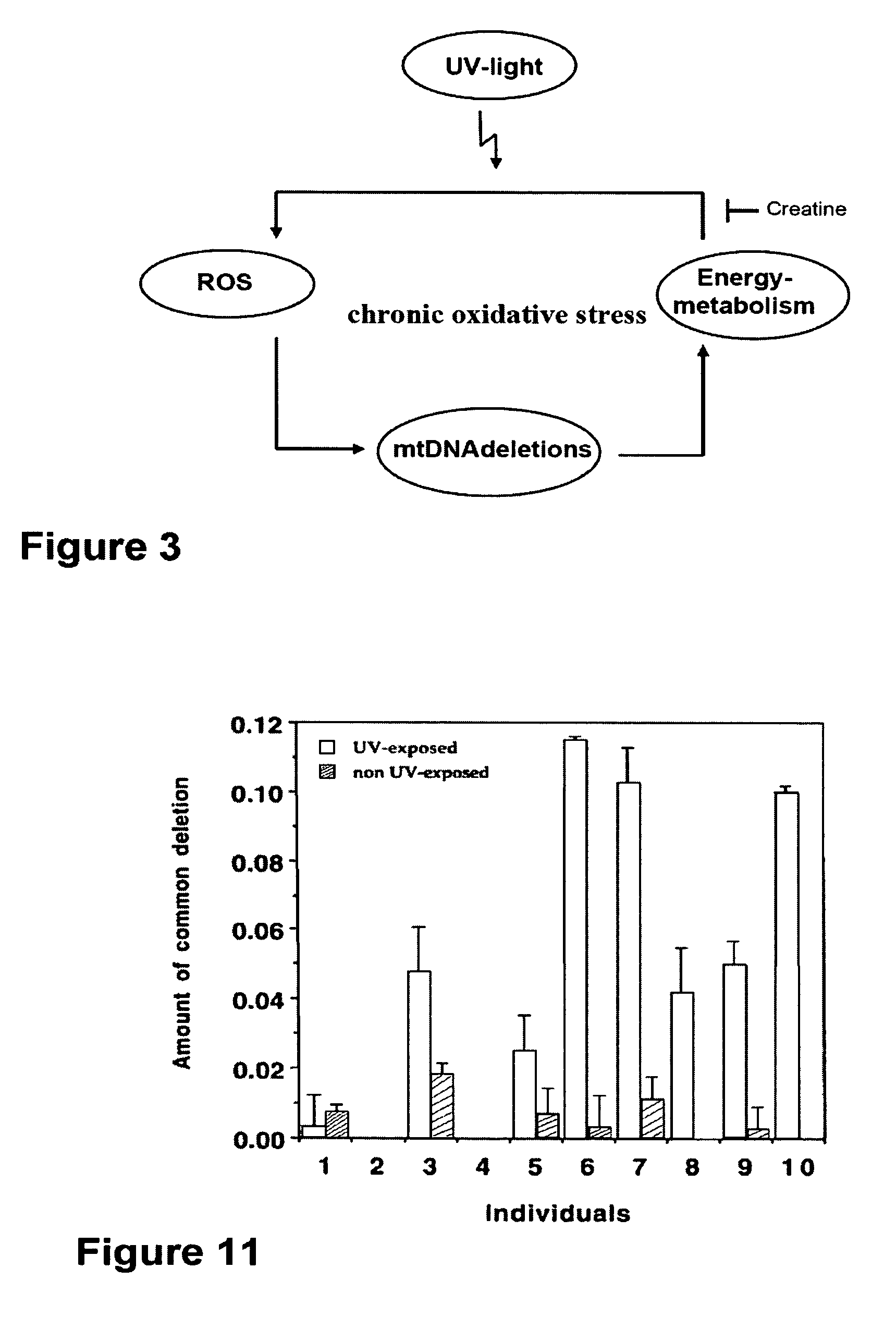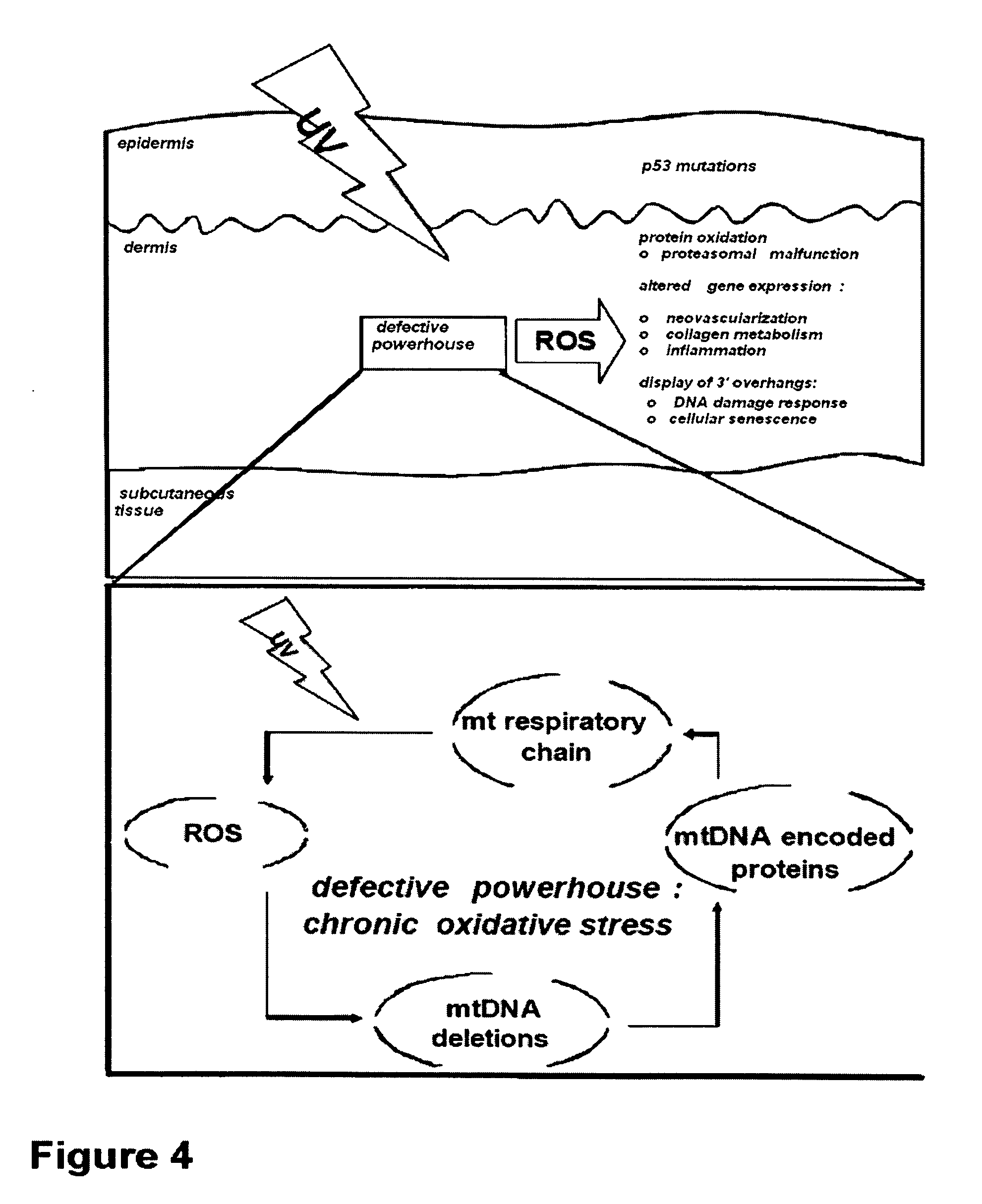Anti-aging methods and composition
- Summary
- Abstract
- Description
- Claims
- Application Information
AI Technical Summary
Benefits of technology
Problems solved by technology
Method used
Image
Examples
example 1
Effects of 1% Creatine Supplementation on 3-Nitrotyrosine / Tyrosine Concentration in FALS Mice
[0117] Oxidative injury involves the activation of nitric oxide production, and peroxynitrite which results in nitration of proteins. The nitration of proteins could be determined by measuring the ratio of 3-nitrotryrosine to tyrosine. The FALS mice are transgenic animals that express a mutant form of Cu / Zn superoxide dismutase found in patients with familial ALS (Amyotrophic Lateral Sclerosis). These animals develop ALS symptoms with gradual motor neuron loss, muscle weakness, and die within 135 days. Oxidative stress has been associated with the death of motor neurons. Levels of 3-nitrotyrosine are significantly increased in the spinal cords of these mice (Ferrante 1997). The transgenic mice with the G93A mutation and the littermate controls (eight mice per group) were fed 1% creatine or unsupplemented diets at days 70 of age and then killed at 120 days of age for measurements of 3-nitrot...
example 2
Effect of 1% Creatine Supplementation on Hydroxyl Radical Production as Measured by Rate of Conversion of Salicylate to its by Products in FALS Mice
[0118] The level of free radical production in vivo can be determined using the microdialysis technique (Matthews et al 1998). Administration of the mitochondrial toxin 3-nitropropionic acid results in a significant increase in the conversion of salicylate to 2,3-DHBA in the striatum, which is blocked in mice over expressing Cu, Zn SOD (Bogdanov et. al., 1998). Here we demonstrate that systemic administration of 3-nitropropionic acid (3-NP) resulted in a significant increase in the conversion of 4-HBA to 3,4-DHBA in G93 A transgenic mice fed unsupplemented diets. In animals fed 1% creatine supplemented diets, there was no significant increase in 3,4 DHBA / 4HBA after 3-NP administration. This demonstrates that creatine can minimize the production of hydroxyl radicals that are implicated in aging related damage.
example 3
Production of 2,3 and 2,5 DHBA and 3 Nitrotyrosine (Indicators of Oxidative Stress) after Intrastriatal Injection of Malonate in Control Animals Fed with Creatine and Those Fed with Cyclocreatine
[0119] The salicylate hydroxyl radical-trapping method was used for measuring levels of hydroxyl radicals in striatal tissue after malonate injections. Eight animals in each group were fed either a normal diet or a diet enriched with 1% creatine or 1% cyclocreatine for two weeks before intrastriatal malonate injections. Animals were injected with 200 mg / kg salicylate intraperitoneally just before the malonate injections and were killed 1 hour later. The striata were then dissected rapidly from a 2-mm thick slice and placed in 0.25 ml of chilled 0.1 M perchloric acid. Samples were subsequently sonicated, frozen rapidly and thawed and centrifuged twice. An aliquot of supernatant was analyzed by HPLC with the 16-electrode electrochemical detection (Beal et. al., 1990). Salicylate, 2,3 and 2,5 ...
PUM
 Login to View More
Login to View More Abstract
Description
Claims
Application Information
 Login to View More
Login to View More - R&D
- Intellectual Property
- Life Sciences
- Materials
- Tech Scout
- Unparalleled Data Quality
- Higher Quality Content
- 60% Fewer Hallucinations
Browse by: Latest US Patents, China's latest patents, Technical Efficacy Thesaurus, Application Domain, Technology Topic, Popular Technical Reports.
© 2025 PatSnap. All rights reserved.Legal|Privacy policy|Modern Slavery Act Transparency Statement|Sitemap|About US| Contact US: help@patsnap.com



